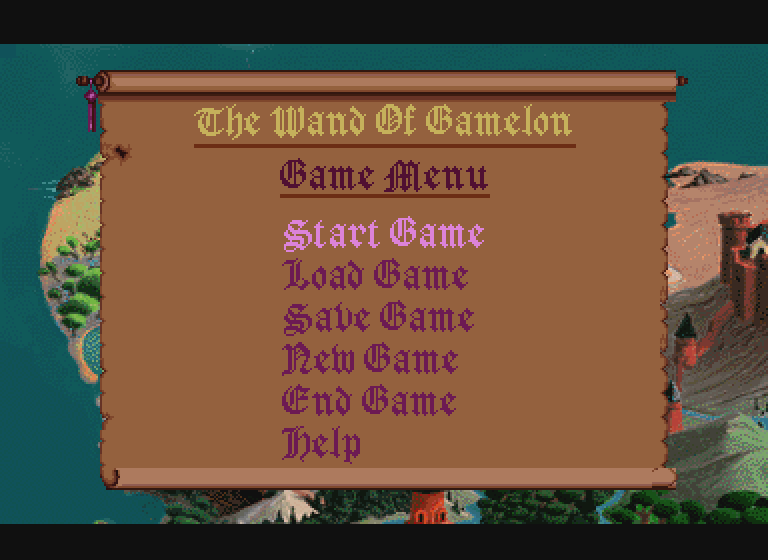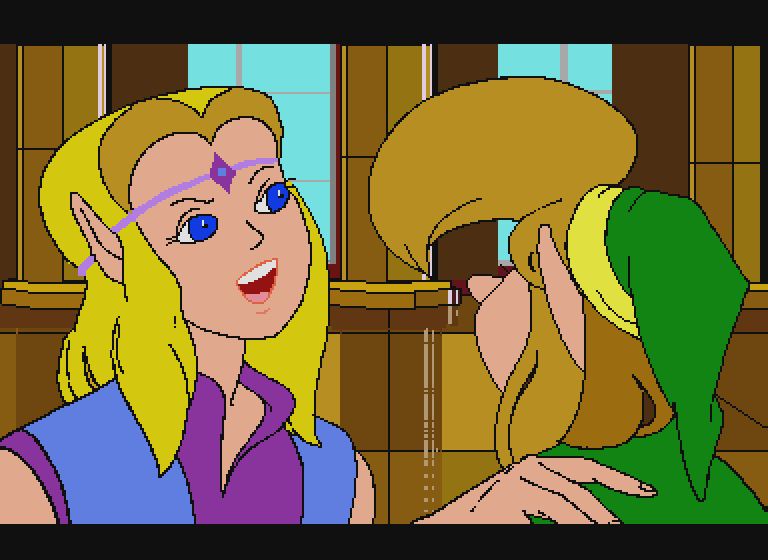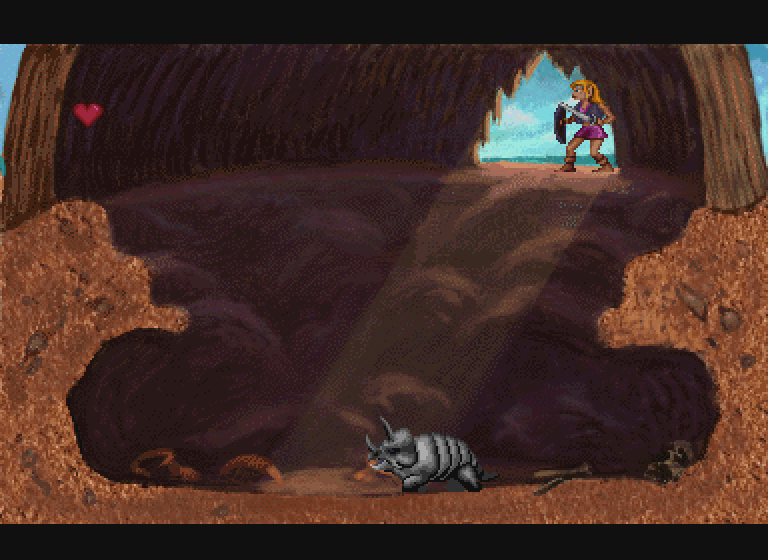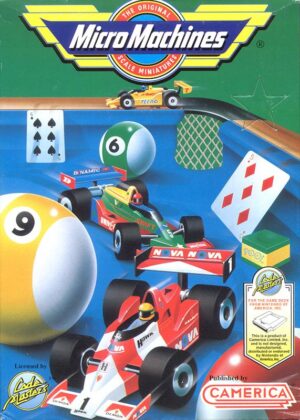Retro Replay Review
Gameplay
Zelda: The Wand of Gamelon takes a bold departure from the traditional top-down adventure of its NES and SNES predecessors by adopting a side-scrolling format. As Princess Zelda, you traverse linear stages filled with platforms, hazards, and enemy encounters. Each level offers a handful of branching exits on the overworld map, giving you the freedom to tackle areas in the order you choose. This structure injects a non-linear flavor, although most quests eventually funnel back to the same key objectives.
(HEY YOU!! We hope you enjoy! We try not to run ads. So basically, this is a very expensive hobby running this site. Please consider joining us for updates, forums, and more. Network w/ us to make some cash or friends while retro gaming, and you can win some free retro games for posting. Okay, carry on 👍)
Combat in Wand of Gamelon is simple but often feels imprecise. You swing Zelda’s sword or utilize boomerang-style items against skeletons, Octoroks, and other familiar foes, but hitboxes can be inconsistent. Enemies patrol set paths or ambush from hidden spots, turning some skirmishes into trial-and-error encounters. While bosses offer a modicum of challenge, their patterns are repetitive, leaving combat feeling more like a chore than an evolving test of skill.
Quest design blends fetch-quests with occasional puzzle elements. NPCs scattered throughout the land of Gamelon task you with retrieving bottles, unlocking secret passages, or locating keys to sealed doors. While this adds variety, backtracking through the same few tilesets can feel tedious. Save points are generous, but frequent death—and the need to replay lengthy sections—dampens the overall flow.
Despite its shortcomings, Wand of Gamelon rewards patience with hidden treasures and optional side-paths. Careful exploration uncovers extra hearts and magic jars, encouraging repeat visits to earlier stages. For players craving a Zelda spin in a platformer shell, the core gameplay loop remains oddly compelling, even if it’s overshadowed by control quirks and level repetition.
Graphics
For a Philips CD-i title released in 1993, Wand of Gamelon pushes the system’s modest capabilities. Character sprites are large and colorful, though animation frames are limited, resulting in choppy movement. Background art depicts lush forests, damp caves, and fiery temples in bold hues, but repetitive tiling and flat textures remind you that this isn’t a 16-bit powerhouse title.
Standout moments come in the form of animated cutscenes. These short, hand-drawn sequences introduce each chapter with dramatic flair—albeit with awkward character designs and stiff lip-sync. While modern players may find them unintentionally humorous, they capture a unique charm and underscore the ambition behind Philips’s collaboration with Nintendo’s franchise.
Enemy and NPC designs range from endearing to bizarre. From skeletal warriors sporting oversized shields to oversized fish jumping out of pools, the art direction leans into exaggerated proportions. Some areas, like the misty graveyard or lava-lit caverns, boast atmospheric palettes that enhance immersion. Others repeat the same tile sets so often that the visual novelty quickly wears off.
Overall, Wand of Gamelon’s graphics feel like a mixed bag: technically limited yet creatively spirited. While they lack the polish of contemporaneous console titles, the game’s distinctive look and memorable cutscenes have earned it a cult following among retro collectors and curious Zelda aficionados.
Story
The narrative thrust of Wand of Gamelon centers on a heroic reversal: Princess Zelda, not Link, embarks on the rescue mission. When her father, the King of Hyrule, disappears in Gamelon and Link vanishes while investigating, Zelda dons the mantle of hero. This switch-up adds a fresh spin, allowing players to experience Zelda as an active protagonist rather than a captive.
Story delivery relies heavily on in-engine dialogue windows and the aforementioned animated intros. Unfortunately, the writing frequently veers into awkward territory, with stilted lines and expositional monologues that raise more eyebrows than pulse races. Quests are described in plain terms—“Find the key in the dungeon”—rather than through evocative storytelling, which can lessen emotional engagement.
Despite its narrative flaws, Wand of Gamelon does present some memorable moments: a tense water-wheel puzzle, a dramatic showdown atop a rickety bridge, and a heartfelt reunion with an ailing king. NPCs like the eccentric Duke Onkled and the foreboding Ganon cameo inject personality, even if their dialogue occasionally borders on the unintentionally campy.
For those seeking the rich, lore-filled sagas of A Link to the Past or Ocarina of Time, Wand of Gamelon’s story may feel thin. Yet, as a standalone fairy tale starring Princess Zelda, it offers a curious alternative adventure that celebrates the series’ core themes of courage, rescue, and perseverance.
Overall Experience
Zelda: The Wand of Gamelon occupies a unique space in gaming history: a flawed but fascinating experiment that reimagines a beloved franchise on unconventional hardware. Its side-scrolling stages, animated cutscenes, and heroic Zelda premise distinguish it from other CD-i titles, though subpar controls and repetitive design keep it from feeling like a lost classic.
Difficulty is uneven. Some levels breeze by on the strength of generous health pickups, while others demand pixel-perfect jumps or repeated boss attempts. New players may find the trial-and-error combat punishing, but veterans of retro platformers might appreciate the nostalgia-tinged challenge. Save anywhere functionality helps mitigate frustration.
From a modern perspective, Wand of Gamelon’s greatest appeal lies in its historical oddity. Collectors will relish owning a piece of “what might have been” in Nintendo’s legacy, and Zelda completists will be curious to see Princess Zelda in the hero’s role. Casual players, however, should prepare for dated mechanics and production values that haven’t aged gracefully.
Ultimately, if you’re intrigued by offbeat entries in iconic series and don’t mind rough edges, Zelda: The Wand of Gamelon delivers an engaging—and at times endearing—journey through Gamelon. Just temper your expectations: beneath its ambition lies a game that’s as quirky and uneven as the platform it inhabits.
 Retro Replay Retro Replay gaming reviews, news, emulation, geek stuff and more!
Retro Replay Retro Replay gaming reviews, news, emulation, geek stuff and more!









Reviews
There are no reviews yet.